Cameron was just over a year old when he took his first steps in the cobble along the south shoreline of Grebe Lake in Yellowstone National Park.
My wife and I had hauled our little family down the three-and-a-half-mile trail from the Grebe Lake Trailhead between Norris and Canyon to the shores of this beautiful little backcountry lake for one simple reason.
I wanted to catch Arctic grayling.
Our daughter, Delaney, was not quite 5, and she made the hike in without much trouble—it’s not a tough walk … mostly flat through dead standing timber that burned in 1988. She toted a little pink Barbie backpack full of apple juice and string cheese—the perfect backcountry snack for a Kindergartener. Cameron, on the other hand, made the journey in the “baby backpack” on his mom’s shoulders and from what I can remember, he slept most of the way.
I toted a larger pack with fishing gear, snacks, drinks and the like. For day trip, we probably overdid it. But that’s what parents do, I guess.
We arrived on the shores of Grebe Lake, relieved to shed our burdens. My wife spread out a little blanket not far from the water’s edge, and I got busy assembling a 4-weight fly rod.
I’d caught grayling before, but here in the Intermountain West, their persistence largely depended on state fish and game agencies—native grayling hung on in a few places, like Montana’s Big Hole River and a few other more remote waters. But in Yellowstone, where they were once abundant in the Gibbon, lower Firehole, Madison and Gallatin rivers, they were all but gone. In Grebe Lake, the native grayling that used to winter in the lake and then migrate into the inlet and outlet streams for the summer were, indeed, extirpated, largely thanks to the introduction of non-native fish, like rainbow trout. The grayling that lived in Grebe were introduced by fisheries managers and were not native to the park. They were “adfluvial,” meaning the vast majority of their life cycle spent in lakes, not in the rivers and streams.
It was a beautiful early-summer day that blesses Yellowstone after winter’s last gasp, which usually comes in late May. The trail into Grebe was clear of snow, but a few patches of winter clung to the north sides of big boulders. I dunked a toe into the lake. It was cold, as it should have been, but not numbingly so.
I tied on a small, size 10 olive Woolly Bugger and waded out into the lake up to my thighs and began casting my streamer over a noticeable drop-off. It didn’t take long before I was hooked up. And the fish felt big.
Thrilled at the tug from the big fish, I let it run and take line from the reel, thinking that not only was I catching a grayling, but sizeable one. This, I thought, is about as good as it gets … standing miles away from the blacktop in the chilled waters of a wilderness lake connected to something wild.
A few minutes later I landed a handsome 17-inch rainbow trout. I’d never in my life been disappointed in a fat-and-happy, football-shaped trout that fought like a freight train. Until that moment.
Where were the grayling?
Thankfully, I didn’t have to wait long. A few casts later, and I managed to connect with a nice foot-long, sail-finned grayling that glistened under the summer sun. It was just gorgeous.
I fished for an hour or so, and then wandered back to where Delaney was busy combing through the lake-side cobble, running her fingers over chunks of glass-like obsidian, and where my wife and Cameron were walking along the bank, putting their toes in and out of the lake’s clear water. I watched as his mom let go of one hand, and then the other, and marveled as my son took his very first steps before plopping down unceremoniously on his butt.
The cheers from his mom and dad brought a big smile to his face, and that’s a grin I’ll never forget.
Shortly after we plowed through the snacks and the juice and the water, we loaded everything back into the backpack and began the hike back to the car, and back to civilization. Delaney dutifully donned her Barbie pack, my wife toted the now-walkable boy, and I put everything else in my backpack. About a mile back to the car, Delaney begged for a rest.
“Will you carry me, Daddy?” she asked. I reached down, picked her up and slung her to my shoulders.
“You’re getting so big!” I exclaimed. She put her hands on top of my head, like she always did, and enjoyed the ride. It lasted for another mile, and I was spent.
“Honey,” I said. “You’re going to have to walk. I can’t carry you anymore.”
“It’s OK, Daddy,” she said. “I’m not tired anymore.” I plopped her down and she started up the trail like a trooper.
We got back to the car about half an hour later, and started putting all the gear away. I tucked my backpack and all my fishing gear into the back of the vehicle, and then I reached down and grabbed Delaney’s little pink pack. It was heavy. Way too heavy.
I opened it up and found it full of glistening black obsidian, or larger igneous stones that contained hunks of the volcanic glass. There were dozens of them. No wonder she felt so heavy when I put her on my shoulders. The kid walked out of Grebe Lake with a Barbie backpack bursting with rocks.
And, of course, removing geologic and archaeologic items from the national park is illegal, so I had to explain to my devastated little girl why couldn’t take these beautiful rocks home. The tears were unbearable.
It’s a funny story her mom and I still tell to this day—how she managed to wander out of Grebe Lake with 20 pounds of stones in her backpack, I’ll never know. But we dutifully spread the rocks around on the ground near the trailhead and explained to our little girl that she wasn’t to take anything from the park ever again.
That was probably 15 years ago. Cameron is now driving, and Delaney is out on her own having her own adventures. She’ll never forget Grebe Lake, and neither will I. Or the grayling that brought us there.
Editor's note: This story is an excerpt from Chris Hunt's new book, entitled Catching Yellowstone's Trout: A Fly-Fishing History and Guide, available now from Arcadia Publishing.




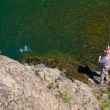
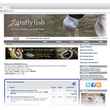
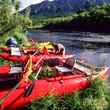





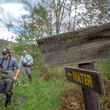



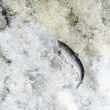
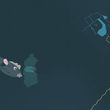



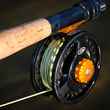




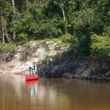
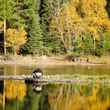


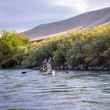
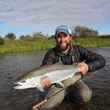
Comments